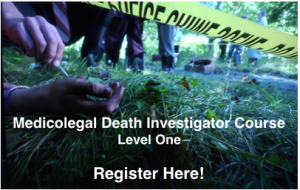 In the real world, not everything goes well, not everyone is happy, there is always bad news as well as good, troubled waters as well as smooth. Very few investigators fail because of their inability to deal with success. Typically, failure in this industry results from an inability to deal with problems. Conflict resolution within the police and investigative agencies can be very difficult. Some action, even if that is deliberate non action, must take place.
In the real world, not everything goes well, not everyone is happy, there is always bad news as well as good, troubled waters as well as smooth. Very few investigators fail because of their inability to deal with success. Typically, failure in this industry results from an inability to deal with problems. Conflict resolution within the police and investigative agencies can be very difficult. Some action, even if that is deliberate non action, must take place.
In this episode I share a portion of training around the topic of conflict between peers and associated agencies. Below are some quick tips we covered in the training.
Four Basic Principles of Conflict
1. Conflict is normal and not all conflict is bad.
Some conflict is creative and has real positive uses. Sometimes its just a matter of differing life styles or opinions. Resolved properly these can be very use full
2. Good conflict may deepen superficial relationships
Many times relationships are very shallow and people never get close enough to ever even have a conflict. Very often when a disagreement occurs the relationship between the two parties deepen, because they have come to know each other better.
3. Personal growth often occurs through dissonance
Dissonance simply means lack of agreement. Growth often occurs because the social turbulence causes people to look for resolution therefore resulting in personal growth. Within the public service community and among men and women of goodwill, conflict is common, not always bad, and can have positive outcomes.
4. A model of advocacy may appear to be contention when it is not really conflict
This can be an effective way to reach decisions. If a group in a room brings together their own passionate opinions and each expresses them strongly, a disagreement can result. But done correctly and in humility the end can result in a balanced and successfully outcome and decision.
Five Basic Causes of Conflict
1. Conflict is frequently because of unmatched expectations
These can lead to disappointment which leads to loss of confidence, and can arise from misunderstandings. A different set of expectations of a leader, program, style, etc is a certain recipe for conflict
2. Conflict is caused by the mounting number of buried hurts, slights, and insults.
These hurts are often times collected up and saved. Burying feelings , disappointments, personal injuries, etc is a deadly illness in the public service arena. It is very unhealthy to bury your hurts. They will come out someday and in a big way. Many times conflict between two people in an agency is from a gradual buildup of hurt and disappointment.
3. A major cause of conflict is unexpressed fears. (and jealousy)
People may find themselves resisting others because of fears that may have never been expressed. It is easy to become paranoid. It is easy to be fearful about what might happen in situations involving other co-workers or related agencies. If these fears are never expressed, they can never be countered, they can never be checked out, so they can never be resolved.
4. Competition for limited resources can cause conflict.
There is never enough money, time, or attention in the work of public service and government. Leaders are many times placed in a situation where there is competition for money and resources. The leader must respond by constantly reassuring people in an atmosphere of fairness so that conflict won’t occur. If someone gets the feeling that they are not valued as highly as someone else, conflict will occur.
5. Conflict escalates in a hostile and failing environment.
A psychological study shows that if people or animals are put in situations in which pain is delivered and discomfort is created, individuals or animals will always turn on each and start fighting. So basically when things are not going well they just get worse. Conflict will occur and resolve must be obtained. In a hostile environment people will lash out even when they are not meaning it personally or have any real reason for doing so.
How do we know when conflict is out of line
What guidelines can be used to determine whether conflict is a problem that needs attention or can just be tolerated and observed.
1. Conflict is out of line if it inhibits those involved from participating in the work of the agency.
If a conflict, for whatever reason, causes a person to stop pursuing the goals of the organization, it is a bad situation.
We can deal with conflict in two ways;
- We can stamp it out every time
- We can let it work itself out
Both have value but conflict is unacceptable if it keeps either of the combatants or parties from doing the work of the agency.
2. When conflict damages the public reputation of the agency, it needs resolution
When conflict is so great that it spills over into the outside world and damages the reputation of the agency, somebody in leadership needs to do something about it.
3. When conflict distracts from the larger task of the organization, it needs resolution
If conflict becomes so great that people and leaders are loosing focus of the vision and mission of the organization, it needs attention now. Constructive criticism can be good, but let go too far and the whole mission is in peril.
4. When conflict is along vertical lines of authority, it is wrong and needs attention.
If conflict occurs along vertical lines of authority and is chronic and ongoing, it is negative and it is wrong . You must deal with it soon and completely. Do not leave any residue for it to grow back from.
Essential Qualities for Conflict Resolution
1. An attitude that harmony is important
That means that at least one must care about resolving the conflict. Remember friction creates heat, something must be done to change the situation. Tremendous power and energy is created in an organization that comes together in unity and purpose.
2. A willingness to communicate openly, effectively, and constructively
Sometimes it is easier to not say what one thinks if he feels that it will not be well received or bring embarrassment to himself or someone else. But there must be a willingness by all parties to open communication without judgment. Most conflicts occur simply out of an unwillingness to engage to open discussion
3. The ability to take another person’s perspective.
This is considered vital by psychologists, This is why role playing to so useful Seeing and trying to understand another person’s point of view is a key to resolving conflict.
4. An ability to detach emotion from issues.
This is not easy, to take emotion out of a conflict and approach it reasonably and without emotion. It is reasonable to take time to think it through and remove yourself from emotions.Sometimes the process needs to slowed down because time can drain some of the emotion from the situation.
5. The ability to understand that conflict is not necessarily or essentially competitive
There does not always have to be a winner and a looser in every conflict. But many times a competitive instinct keeps people from resolving conflicts on their own. Locked in disagreement, the natural tendency is to refuse to concede, because losing seems like surrender of the higher ground or greater advancement .When at least one person understands that its not about winning or loosing, then movement can be made toward resolution . Seek Win Win solutions



